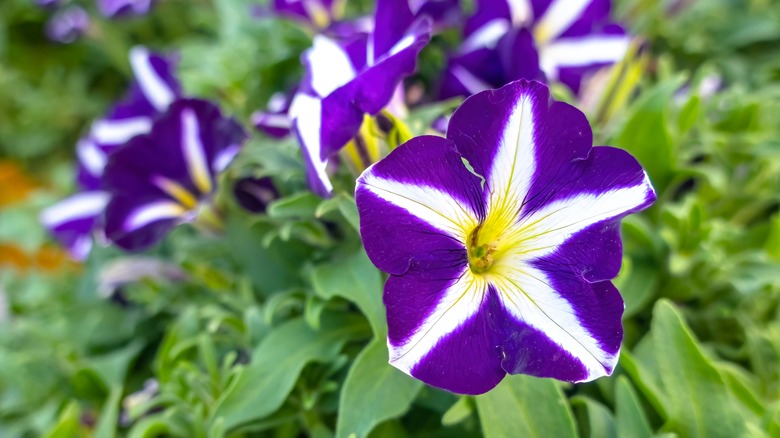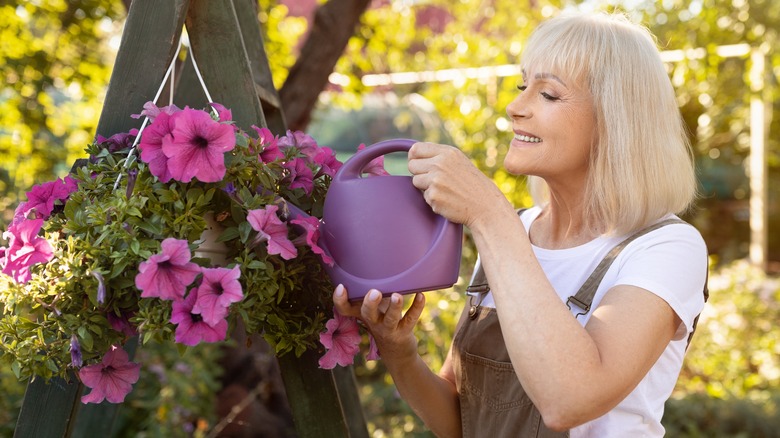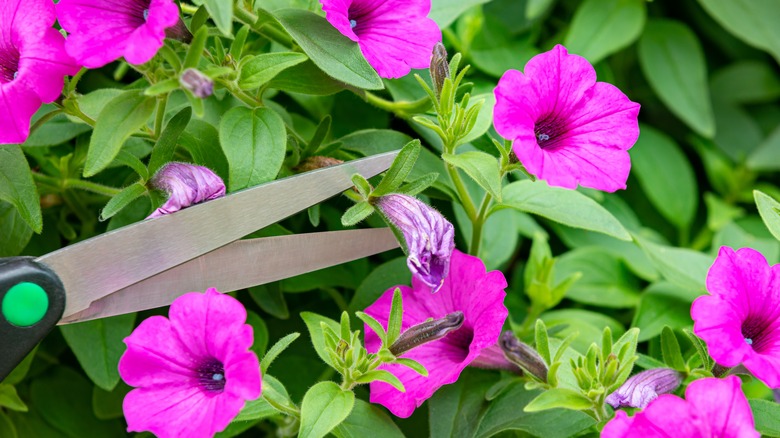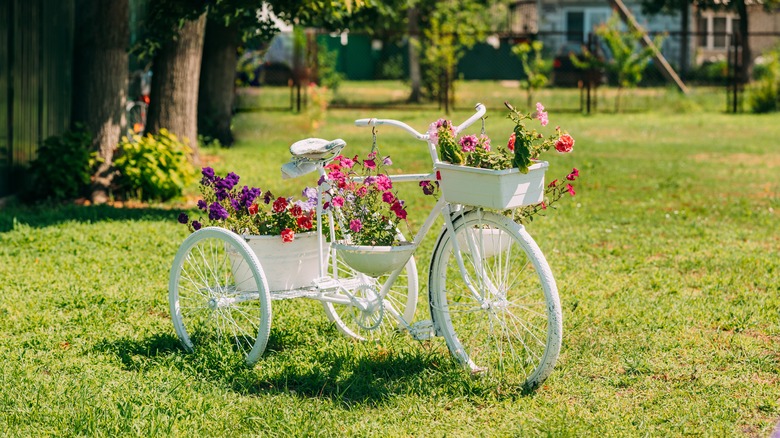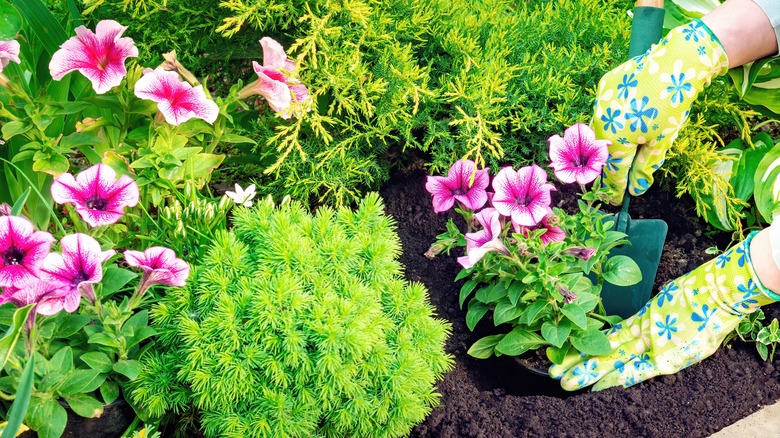Gardening Mistakes That'll Kill Your Petunias Before You Can Enjoy Them
Petunias are a favorite annual among flower enthusiasts because they are easy to grow, inexpensive at garden centers, and – when treated well – will bloom from spring through fall. Available in white, shades of pink, red, purple, and even black, these gorgeous trumpet-shaped blooms come in colors that match any color palette. There are even stunning new varieties like night sky, which features bright purple flowers bespeckled with polka dots. Petunias grow well in the ground and containers, and do not require much maintenance; however, there are a few crucial mistakes, like overwatering or not providing enough sun, that can cause your greenery to underperform or even die.
There are four types of petunias. You will find the largest blooms on grandiflora cultivars, while the multiflora has slightly smaller and more numerous flowers. The milliflora types provide a plethora of tiny blooms. If you are looking for a ground cover for three-season color, a spreading variety might be the best choice for your space. Whatever type you choose, there are a few rules to follow to help your petunias thrive.
Excessive water
Like most landscape plants, petunias do not tolerate soggy soil. Waterlogged roots, often referred to as "wet feet," lead to root rot. Once you see evidence of this disease, it is usually too late to save the plants. Petunias planted in areas with poor drainage, heavy clay soils, low-lying areas, and containers with insufficient drainage holes are most susceptible to root rot. Before planting, make sure the intended space isn't soggy for more than a day or two after rain or heavy watering. Signs of root rot include yellowing, wilted leaves, soggy stems, and the foul smell of rotten greenery.
Speaking of watering, even plants placed in an area with sufficient drainage can get root rot. During spring and fall, you shouldn't need to water petunias daily, unless there is significant heat or drought. Daily watering may be necessary in regions with very hot summers, but even then, in-ground plants usually require less water than container plants. Water your petunias any time the soil is dry 1 inch below the surface.
Not deadheading
Not all flowers require deadheading to keep blooming, but petunias will reward you with constant flowers throughout the growing season if you remove those spent blooms. Flowering plants produce seeds, and allowing those seeds to mature triggers the plant to stop blooming because it has fulfilled the requirements for reproduction. Once they are finished reproducing, the whole plant will fade away. Removing the flowers as soon as they fade, a process called deadheading, keeps your plants working hard to produce seeds.
If you have a large bed of spreading petunias, it may not be possible to deadhead them every day or week. If you notice they are not producing as many blooms as they were, go through and cut off as many spent blooms and seed heads as possible to help them flourish again. You might also notice your petunias starting to look leggy in late summer. Cutting them back to a few inches tall will encourage them to produce fresh, bushy growth and loads of new flowers.
Too much shade
Petunias are sun-loving flowers: You can add color in a shady spot by planting some of the many varieties of impatiens available, but don't plant petunias in the shade and expect them to survive for long. While they will grow in as little as five hours of direct sun a day, you will get a much better show of vibrant flowers in an area that offers at least eight consecutive hours of sun.
If you have your heart set on planting petunias but do not have a sunny spot in your landscape for them, grow them in containers. These flowers make a beautiful addition to hanging baskets and window boxes. Any planter that provides good drainage can be placed in full sun to grow stunning petunias. In larger planters, combine petunias with ornamental grasses and vining ornamentals for a truly vibrant arrangement. Use high-quality potting soil and water as needed to keep your petunias happy, and make sure all the plants you select also require full sun to ensure each thrives in the same environment.
No fertilization
Petunias are low-maintenance plants, but it does take a lot of energy to produce masses of colorful blooms. Just like humans, plants need sufficient nutrients to survive, so providing enough fertilizer for your flowers will help keep them healthy. Plants grown in containers lose nutrients more quickly than those in the soil because regular rain and watering can flush them out before they are used. Good potting mix for container plants usually includes slow-release fertilizer, which will be listed on the bag. Get your in-ground petunias off to the best start by working about 2 inches of high-quality compost into the soil when you prepare the ground for planting.
Choose fertilizer specifically for ornamental plants for the best results, and apply the amount indicated on the package when you plant your petunias. Keep your flowers flowing by following the package instructions throughout the growing season. If you notice your flowers are struggling to grow or looking a little leggy despite having plenty of sun and water, spray them with liquid fertilizer to give them a quick boost of nutrients.
